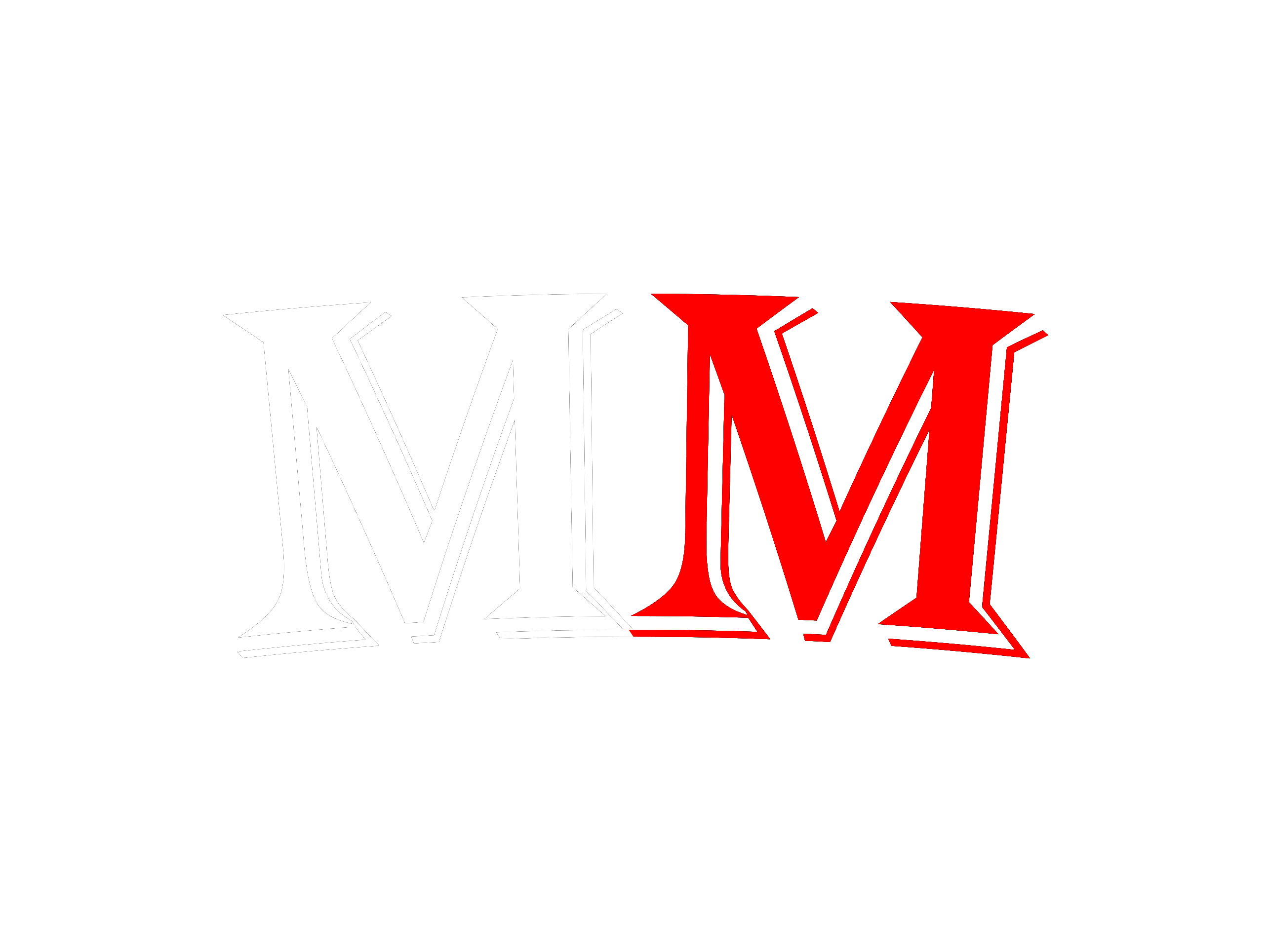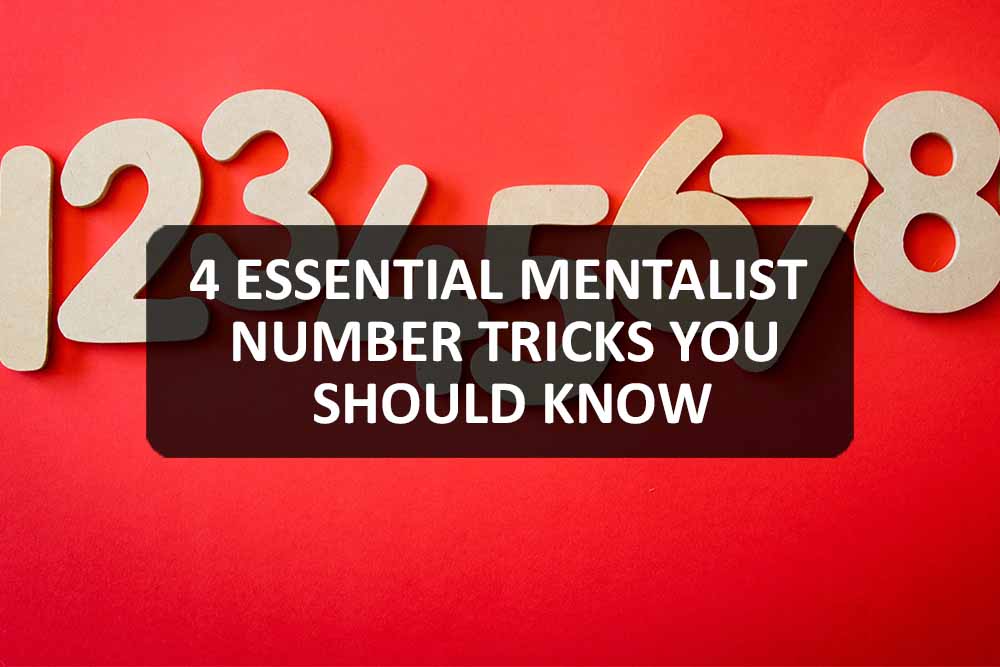Learning mentalist number tricks is a great place to start when you’re studying to become a mentalist. Even if you’re just doing it for fun, number tricks will allow you to wow any crowd, in whatever setting.
Below, we’ve made a list of 4 essential mentalist number tricks you should know. Plus, we’ve included tips on how to improve your practice.
So are you ready? Let’s begin!
4 Number Tricks Every Mentalist Should Know
The great thing about mentalist number tricks is that they require little to no equipment. A simple pen and notepad should be enough. There are also several tricks you can do with a deck of cards or a calculator.
With that in mind, let’s look into 4 number tricks that every mentalist should know.
Mentalist Number Trick 1: The 1089
For this trick, you’ll need a pen or marker and something to write on, either a notepad or a small whiteboard.
Ask your subject to think of a three-digit number. Let’s say the number is 375. Write it down, then ask your subject to “reverse” the number, so it’s now 573.
Pro Tip: Numbers containing zeros are not viable for this trick. Inform your subject not to use numbers with a zero in them. Tell them it’s “not a real number” or that it “needs to hold value.”
Subtract the first number with the reversed number.
573 – 375 = 198
Now, ask your subject to reverse the difference again. So, that’s 891.
This time, instead of subtracting, you’re going to add it to the initial number.
198 + 891 = 1089
The sum will almost always be 1089.
Now is the time for you to pull out a piece of paper from your pocket or turn it over to a different page on your notepad.
Say, “You know what, I actually made a prediction last night. I wrote it down on this piece of paper right here. And see — it’s 1089.”
How is this done?
We can treat this trick like a middle-school algebra assignment.
Each number of the original three-digit figure will be denoted by a, b, and c. So the three-digit number is now 100a + 10b + c. Put these in reverse order, then you have 100c + 10b + a.
When you subtract (100a + 10b + c) – (100c + 10b + a), you’re left with a difference of 99(a-c).
Since the order of the numbers was decreasing (a-c), it can only be at least 2 and no greater than 9; therefore, the results should be 198, 297, 396, 495, 495, 594, 693, 792, or 891.
When you add these numbers with the reverse of itself, the sum is always 1089.
Pro Tip: When subtracting reverse numbers, make sure that you put the larger number on top.
If you’re terrible at algebra, don’t worry.
You don’t need to get down to the technical aspect of it. Just follow the trick and you’ll always get it right.
Mentalist Number Trick 2: Easy Mind-Reading
Mind-reading tricks aren’t always easy.
But the good news is that this one is.
For this, you may want to have a calculator in hand or ask your subject to pull out his or her phone calculator.
Tell your subject to think of a number — any number — and tell them not to reveal this to you until the end of the trick. Now, have them square the number using their calculator (square means to times the number by itself).
Pro Tip: again, zero is not a viable option for this trick, so make sure to inform your subject not to use the number.
Let’s say they chose 23. Square this and you get 529.
Now add the result to the original number.
529 + 23 = 552
The next step will be to divide the new sum with your original number.
552 ÷ 23 = 24
Add this next number with 17.
24 + 17 = 41
Subtract your original number from the sum.
41 – 23 = 18
And finally, divide the difference by 6. The answer will always be 3.
18 ÷ 6 = 3
How is this done?
Well, no matter what number they choose, the final answer to this trick will always be 3. If we go back (again) to your middle-school or high school algebra lessons, we can understand the process a little bit better.
Following the instructions above while using the variable X instead of the original number, you’ll notice that X is eliminated by step 5.
You can use this idea to create your own mentalist number tricks.
Mentalist Number Trick 3: The Kruskal Count
Named after physicist Martin David Kruskal, the Kruskal Count is an impressive statistical show that’s enough to amaze a crowd — when they first encounter it. You can’t use it with the same crowd twice in a row.
For this trick, you’re going to need a deck of cards and a table or some flat surface you can lay out the cards on.
Ask your subject to shuffle the deck as much as they want. Once done, have them choose a secret number between 1 and 10. As you reveal the cards one by one from the deck — laying them out on the table — ask your subject to count along and consider the card that lands on their number. Tell them to make the card their new secret number.
Let’s say your subject’s secret number was 7. And say the 7th card you revealed was the 8 of diamonds. Therefore, their new secret number will be 8.
After they have their new secret number, tell them to repeat the process until they run out of cards.
Just before they run out of cards, however, make your prediction. Let’s say you predict that they will land on the second to the last card on the table.
Around 84% of the time, a mentalist gets this number right.
How is this done?
What your subject doesn’t know is that during the trick, you’ll also be choosing a number between 1 and 10 and counting along with them. (The number 7 is a good place to start, as statistics show most people often go for the figure when asked to choose a number between 1 and 10.)
Again, there is an 84% likelihood that you and your subject will land on the same number, but it doesn’t always work.
Pro Tip: In the case of picture cards, you can remove them from the deck or give them the same value of aces (1) during your trick or any other number that may work with your variation of the Kruskal Count.
Mentalist Number Trick 4: The 21 Card Trick
As the name suggests, you’ll be needing a couple of cards for this trick — specifically 21 cards.
Shuffle these cards, or better yet, have your subject shuffle the cards and choose a random card from the pile.
You can say, “Now, I want you to choose a card from the pile and keep thinking about the number and image that you see. This is how you will communicate it to me.”
Once they’ve gotten a good look at their card, ask them to put it back into the pile and shuffle it again.
The next step is to divide your cards into three columns, each column will have seven cards facing up. Have your subject choose the column where their card is.
Do this step three (3) more times.
At the last repetition — and after asking your subject to choose the column where their card is in — gather all the cards into a pile again and distribute them into piles of three.
Ask your subject to take out piles until one pile of cards is left.
From the pile ask your subject to choose a card. This card will almost always be the card they started with.
How is this done?
Think about this trick in terms of modular arithmetic, and if you’re unfamiliar with what this is, here’s a short introduction to the technique.
The idea is to divide the number of cards you have (21) with a fixed number (3).
In this trick, you have the remainder(s) 0, 1, and 2, denoted by the number of columns (during the first part of the trick) and the number of cards in each pile (during the last part).
Here’s a short video to help you understand the technique a little better:
Conclusion
So these are the 4 essential mentalist number tricks you should know.
These mentalist number tricks are great to play in small crowds but never with the same crowd twice. People can catch on pretty quickly to what you’re doing, and that could be the unraveling of your trick.
If you’re interested to learn more about how you can improve your mentalist skills, you may check out our blog “How to Practice Mentalism.”
Have fun!

